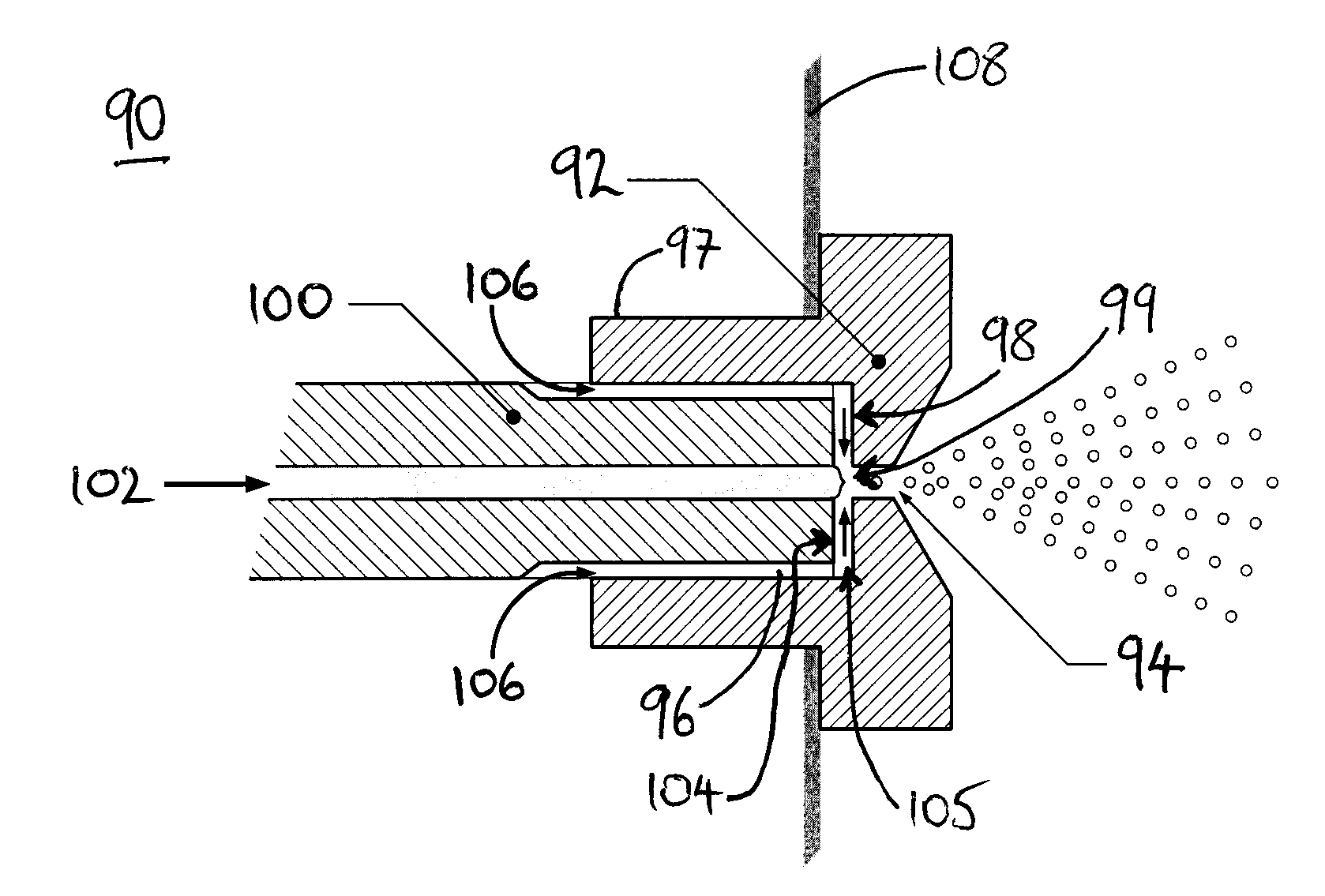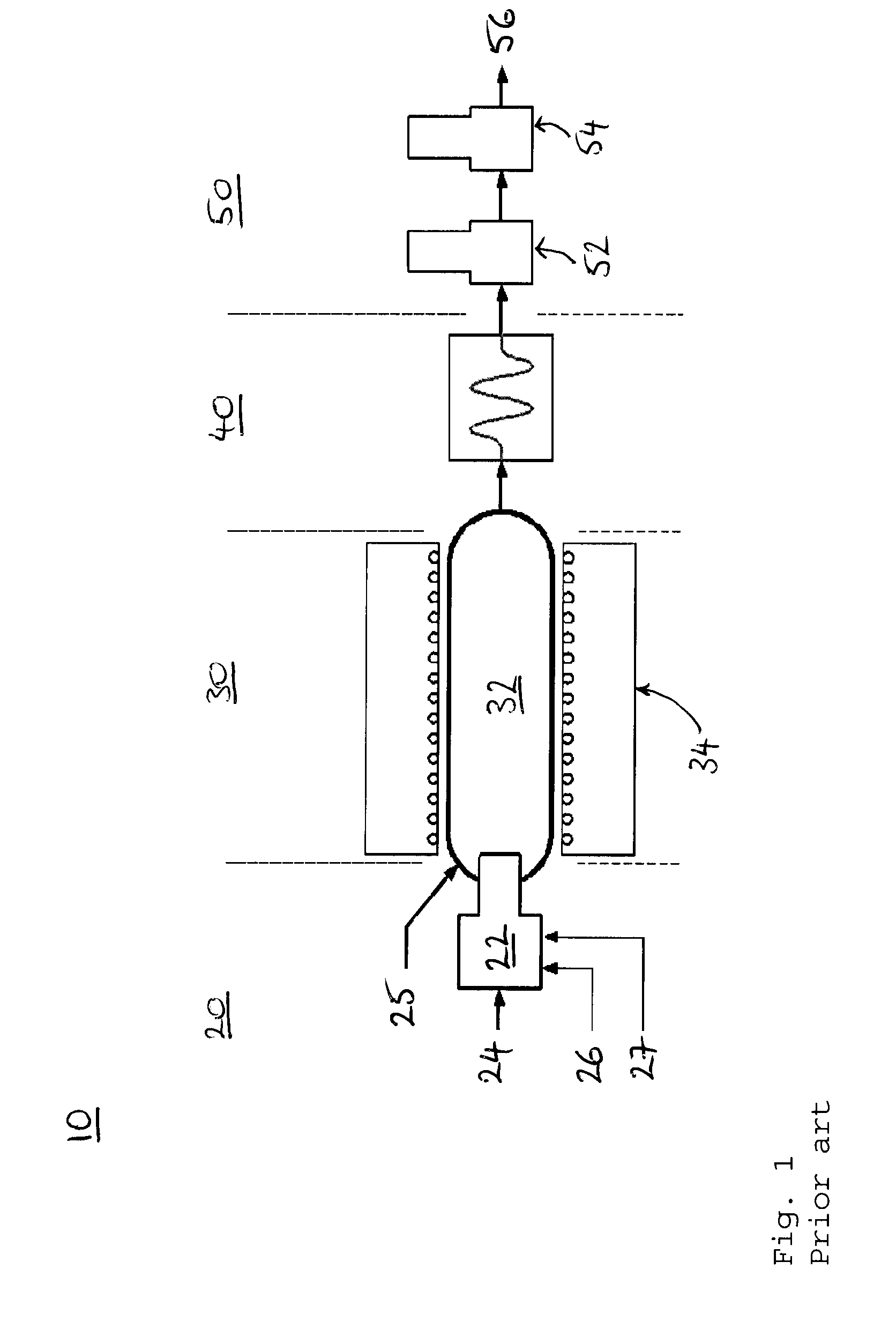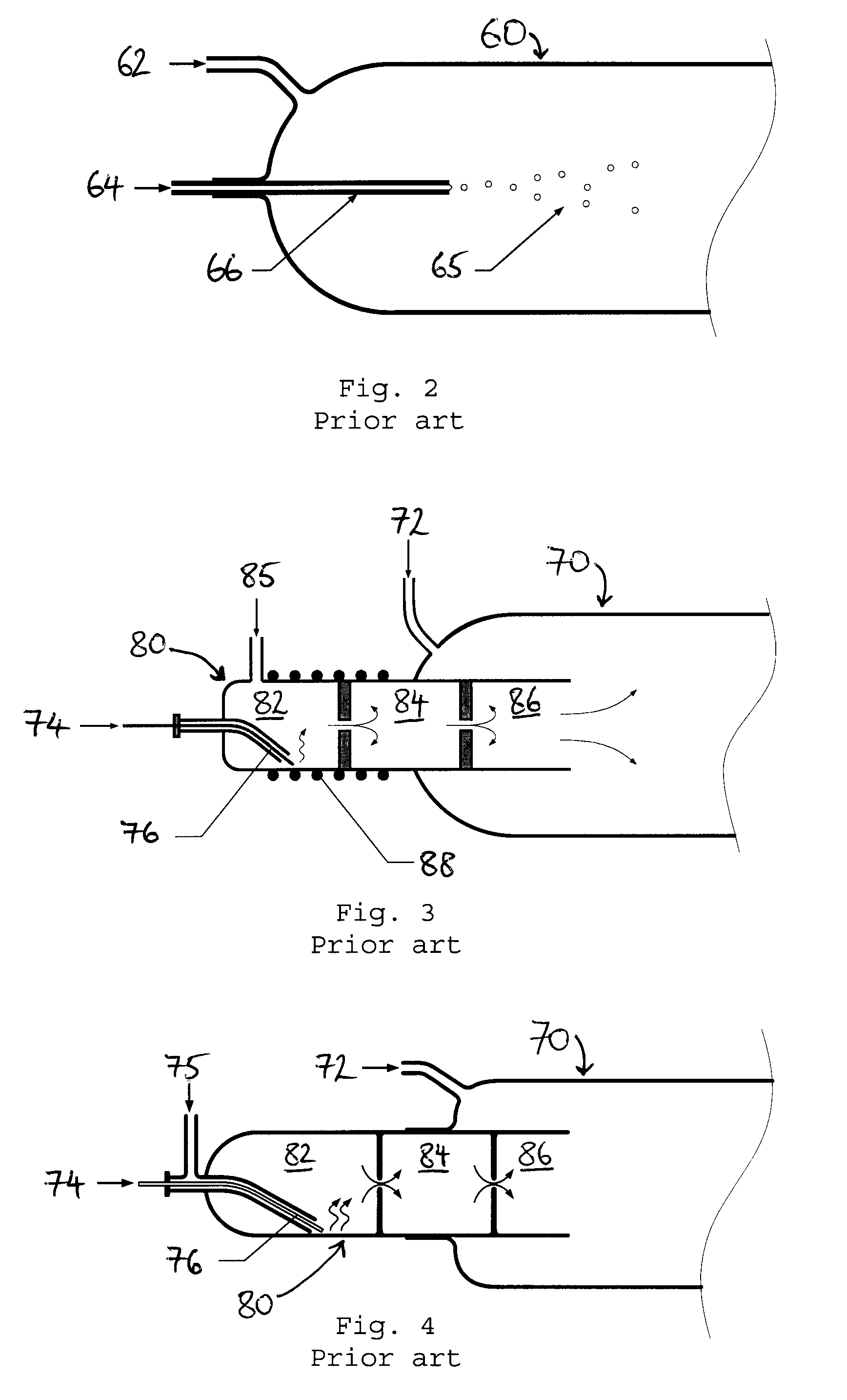Combustion analyzer sample introduction apparatus and method
a sample introduction and sample technology, applied in the direction of instruments, material heat development, transportation and packaging, etc., can solve the problems of increasing the heat evolution rate, reducing the number of separate components, so as to reduce or avoid evaporation and residue formation, the effect of avoiding the blocking of the sample introduction apparatus
- Summary
- Abstract
- Description
- Claims
- Application Information
AI Technical Summary
Benefits of technology
Problems solved by technology
Method used
Image
Examples
Embodiment Construction
[0046]Referring to FIG. 5, there is shown a sample introduction apparatus 90 according to one embodiment of the invention. The sample introduction apparatus 90 acts as a spray injector, to discharge a liquid sample therefrom in the form of a spray or mist. The sample introduction apparatus 90 comprises a spray head 92, which has a spray, or discharge, opening 94 extending axially through a downstream, combustion chamber-facing part of the spray head. On an upstream, sample supply-facing part of the spray head 92 is formed a cylindrical cavity 96, which has a flat front wall 98. A supply inlet 99 formed at the centre of the front wall 98 provides a fluid communication path between the cavity 96 and the spray opening 94.
[0047]The sample introduction apparatus 90 also comprises a sample supply tube 100 having a channel 102 running therethrough. The tube 100 has an annular-profiled, downstream end 104, which extends in the cavity 96 towards the front wall 98. A disc-shaped gap 105 is fo...
PUM
 Login to View More
Login to View More Abstract
Description
Claims
Application Information
 Login to View More
Login to View More - R&D
- Intellectual Property
- Life Sciences
- Materials
- Tech Scout
- Unparalleled Data Quality
- Higher Quality Content
- 60% Fewer Hallucinations
Browse by: Latest US Patents, China's latest patents, Technical Efficacy Thesaurus, Application Domain, Technology Topic, Popular Technical Reports.
© 2025 PatSnap. All rights reserved.Legal|Privacy policy|Modern Slavery Act Transparency Statement|Sitemap|About US| Contact US: help@patsnap.com



